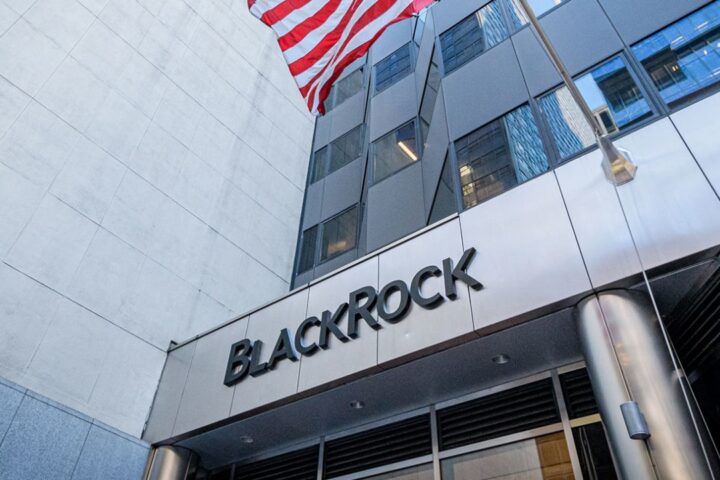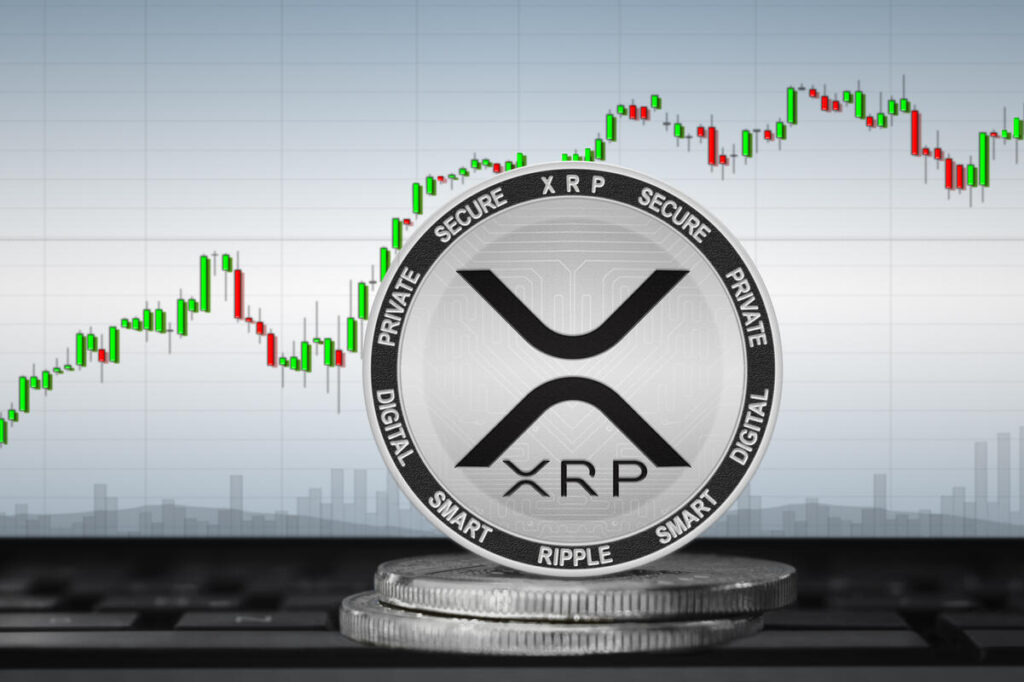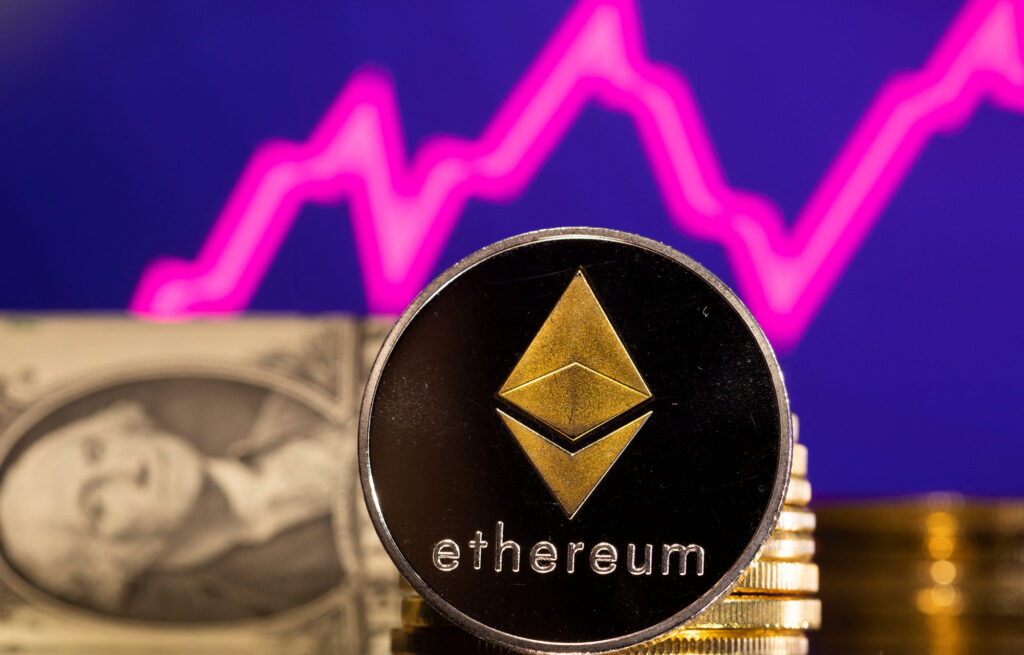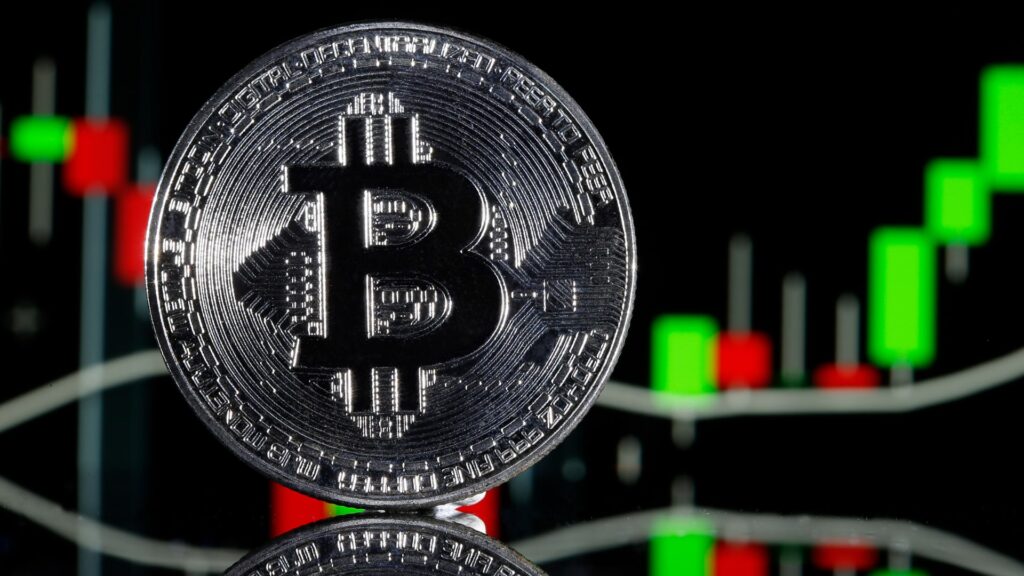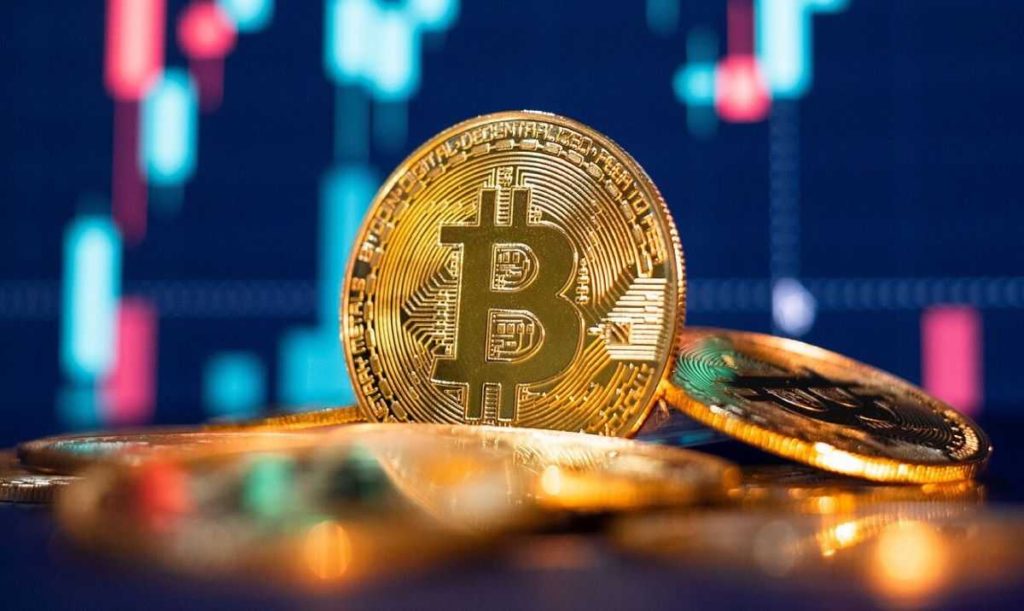You can get lucky with DeFi trading, but more often than not, success requires expertise and careful planning. Successful DeFi traders possess comprehensive knowledge of blockchain, financial literacy, analytical skills, and a genuine interest in cryptocurrencies and their underlying mechanics. They are deeply familiar with concepts such as cryptography, decentralization, ledger technology, and consensus algorithms, and are aware of DeFi fundamentals, including asset allocation, market analysis, and risk management.
Expertise also involves familiarity with the latest data analytics tools to help one predict DeFi market trends and protocol movements. Experienced traders can utilize their skills for day trading, which requires a significant investment of time and a willingness to take risks. Day traders purchase and sell cryptocurrencies within short periods using tools like technical and fundamental analysis to profit from price fluctuations. This form of trading can lead to quick earnings, but it’s far from the only possible revenue stream for a trader with specialized knowledge.
1. Curated token baskets help novices leverage expertise and generate revenue
Novices almost always lose money when they start trading or investing in cryptocurrencies, as the market’s intricacies require time and experience. Token baskets involve leveraging the expertise of others to potentially profit in the cryptocurrency market. Mosaic Alpha was launched in 2022 as an intuitive, decentralized trading platform that connects professional traders and investors with individuals who lack the time or skills to start investing in the market.
Mosaic Alpha’s token baskets simplify the process, enabling beginners to invest alongside experienced traders and leverage their strategies and expertise. Users can invest in diversified baskets with low initial capital and gradually accumulate knowledge. Experienced traders create and manage their token baskets that others pay to use, and are rewarded when a basket performs well. They curate baskets based on their expertise and share them with novices, earning referral fees.
The performance fee is contingent upon the success of the token basket. Transaction costs are relatively low because Mosaic does not operate on the Ethereum network. The token baskets only include carefully selected cryptocurrencies to ensure the safety of user funds.
Copy trading is similar to token baskets in that it also leverages expertise. Platforms automatically synchronize trading decisions, ensuring that all trades are replicated within the user’s portfolio in real-time. Specialized software that also enables users to analyze various traders’ strategies and performance drives this process.
Each user decides how much to invest and can set a loss limit, as well as other parameters. No manual intervention is required once connected; all of the copied trader’s actions are executed automatically.
2. Address the dire need for quality educational content
One can only speculate how many people risk their funds without fully understanding the tools available in the DeFi ecosystem. There is a dire need for objective, high-quality educational content. A significant amount of content is biased and published on platforms that have a vested interest in attracting users. In other cases, articles purported to be written by knowledgeable individuals are, in fact, put together by complete novices.
A seasoned professional can make money by creating content that actually helps laypersons. Reliable knowledge bases contain comprehensive glossaries of terms and practical courses on DeFi trading, blockchain gaming, etc. Video tutorials and images accompany the content to make it easier for novices to absorb the details.
Education has always been the missing link between mass DeFi adoption and fiat users, which is why the misinformed and lingering perception of crypto as risky for all investors is not surprising.
3. Help projects gain traction through governance and metrics
A governance model can make or break a DeFi project, and an experienced trader can help make decisions and impact the project’s direction. Some protocols distribute a portion of their transaction fees to individuals who actively participate in voting. New DeFi projects are constantly being launched, yet many survive only briefly. Someone with expertise will know how to recognize a promising project.
Part of that involves metrics such as total value locked, or TVL, which indicates the value locked within a given protocol. TVL offers investors a means to assess the risks and viability of a specific DeFi platform. A platform with a large amount of assets leaves the impression of being secure and trustworthy.
A project’s TVL is analogous to the level of deposits held by a bank. However, it only provides a snapshot of the total asset value, and no information about activity levels is available. A high TVL combined with low activity may indicate that a limited number of stakeholders account for the TVL, which is often a red flag. A savvy investor will also review the data practices of third-party analytics platforms to ensure that TVL data is current.
4. Support transparent projects with a strong technological base
Experienced DeFi traders can profit by identifying and supporting transparent projects with a solid technological foundation, as these tend to inspire confidence and sustained adoption. Transparent, distributed ledgers developed using open-source software provide regulators, consumers, and investors with the transaction data they need. Automated processes further enhance these ledgers’ transparency and auditability, according to the US CFTC. Transaction and activity data are a prerequisite for the effective governance of DeFi ecosystems and projects.
Additionally, viable projects enable real-world use cases, like a native token that can be used outside the project ecosystem. Quality DeFi projects run on a solid foundation that includes smart contracts, blockchain technology, decentralized applications, and oracles.
5. Diversify investments
Finally, DeFi traders can mitigate risk and enhance profitability by diversifying their investments across multiple platforms and projects. Instead of putting all their funds into a single lending protocol, they will allocate some to token sales, yield farming, liquidity provision, etc. If one investment underperforms, others can offset the losses. Traders must also track the performance and interest rates of different lending protocols and stay current on regulatory changes.
Bitcoin briefly surged past $119,000 on Sunday, continuing a strong rebound after touching two-week lows near $114,500.
The price action marked a notable shift in momentum, with bulls reclaiming key levels despite recent heavy selling pressure.
Volatility Returns Near Weekly Close
Data from Cointelegraph Markets Pro and TradingView revealed BTC/USD regaining strength as it attempted a daily close above the 10-day simple moving average.
This movement came as investors digested easing tensions between the U.S. and China, following an agreement to delay the implementation of reciprocal tariffs.
The renewed optimism supported a push above $118,000, prompting traders to focus on critical resistance levels heading into the new week.
Crypto investor Ted Pillows emphasized the significance of the $119,500 threshold.
“$BTC needs to break above $119.5K for a big move. If that doesn’t happen, this consolidation will continue,” he posted on X.
“I think BTC could break above this level next month which will start the next leg up.”
Reclaiming Lost Ground
Analyst Rekt Capital pointed to Bitcoin’s recovery into its former trading range.
“Bitcoin has Daily Closed above the blue Range Low, kickstarting a break back into the very briefly lost Range,” he shared alongside a chart analysis.
“Any dips into the Range Low (confluent with the new Higher Low) would be a retest attempt to confirm the reclaim.”
Despite the upward move, caution still lingered in the market.
Trader CrypNuevo highlighted the potential for a further drop to fill the wick left on the daily chart.
“If we zoom out, we can see that the main liquidation level is at $113.8k,” he explained.
“Consequently, I consider the downside liquidation cluster to be the natural target in the mid-term ($114.5k–$113.6k).”
Short Squeeze Risk Increases
According to CoinGlass, short sellers may face increased liquidation risk if BTC climbs higher.
The current “max pain” level for shorts is around $119,650.
Should Bitcoin retest its all-time high near $123,000, total short liquidations could exceed $1.1 billion.
Analysts now anticipate greater volatility in the coming days as the market approaches key price inflection points.
XRP has experienced a steep correction just days after reaching its highest daily and weekly closing prices above $3.45.
The cryptocurrency fell by nearly 10% over the past few sessions, marking its largest daily loss since April.
On Wednesday alone, XRP plunged 10.33%, raising concerns among short-term traders and futures market participants.
This drop also had a noticeable effect on futures open interest.
According to CoinGlass, XRP futures open interest dropped from $10.94 billion to $9.10 billion—a 16.8% decrease.
This suggests that leveraged traders may be rapidly exiting positions or being liquidated, reducing speculative confidence in the short term.
Third-Largest Long Liquidation in 2025 Hits Binance
XRP’s decline appears to be driven by a combination of whale movements and long liquidation pressure.
Crypto analyst Darkfost pointed out that a wallet linked to Ripple co-founder Chris Larsen recently transferred significant amounts of XRP.
More than 50 million XRP tokens have moved, with roughly $140 million reportedly sent to exchanges.
Of these, 42 million XRP were transferred on Thursday alone, following 84 million moved the previous Friday.
This cascade of activity contributed to Binance recording the third-largest long liquidation event for XRP in 2025.
Approximately $86 million in long positions were wiped out within hours as a result.
Despite this, Cointelegraph has noted continued whale accumulation.
Currently, 2,743 wallets each hold over one million XRP, totaling 47.32 billion tokens.
This accounts for 4.4% of the circulating supply.
Whale Flows Signal Caution
The sentiment among large holders may be changing.
Data from CryptoQuant indicates that the 90-day average for whale flow has turned negative.
This is significant, as the metric flipped positive in early May—preceding XRP’s strong rally.
The current reversal may indicate that whales are reducing their holdings, potentially signaling a local price peak.
Key Levels in Focus as Market Awaits Direction
Even with recent volatility, XRP’s higher time frame structure remains bullish.
Last week’s multimonth high reconfirmed an upward trend, although the recent drop brought prices near critical support.
On the four-hour chart, the $3.00 mark stands out as psychological support.
Thursday’s decline swept liquidity near $2.95, establishing it as an immediate area of interest.
A move above $3.25 would suggest a bullish shift in market structure on lower time frames.
This would likely establish $2.95 as a local bottom.
However, sustained selling could push the price into the $2.66–$2.86 range.
The $2.64 zone, previously a strong resistance level in Q2, now serves as major support.
XRP bulls are likely to maintain control unless price closes below both $3.00 and $2.64, which would suggest a possible trend reversal and further downside risk.
Galaxy Digital has transferred more than 10,000 Bitcoin—worth an estimated $1.2 billion—to cryptocurrency exchanges within an eight-hour window, according to blockchain analytics firm Lookonchain.
This significant movement of funds comes shortly after the company received over 80,000 Bitcoin from a long-dormant wallet linked to a Satoshi-era whale.
The original wallet had not been accessed for 14 years, adding intrigue and speculation within the crypto community.
The reactivation of these early-era Bitcoin wallets occurred earlier this month.
The event took place during a period of heightened market activity, coinciding with Bitcoin reaching new all-time highs of over $122,000.
Bitcoin Price Drops Amid Sudden Supply Activity
Following these large-scale transfers, the price of Bitcoin showed signs of weakening.
Data from CoinGecko revealed that Bitcoin dropped from highs above $119,000 to trade below $116,000 late Thursday.
As of the latest update, the world’s largest cryptocurrency is trading around $115,800.
This marks a 2% drop over the past 24 hours, highlighting the market’s sensitivity to sudden increases in potential sell pressure.
Galaxy Digital’s Strategy Under Scrutiny
The decision by Galaxy Digital to move such a large volume of Bitcoin to exchanges has sparked speculation about the firm’s intentions.
While on-chain transfers to exchanges are often interpreted as preparation for selling, Galaxy Digital has not issued a public statement explaining the motivation behind the move.
The firm, led by Michael Novogratz, is known for its significant crypto holdings and has remained a key player in institutional Bitcoin investing.
This recent transfer could suggest portfolio rebalancing or strategic profit-taking amid the latest price surge.
Historic Coins Reenter Circulation
The reactivated coins were originally mined or acquired in Bitcoin’s earliest years, widely considered the “Satoshi era.”
Funds from such addresses are rarely moved, making their reappearance a noteworthy event in the crypto space.
Given their age, these coins are often considered “clean” or highly valuable due to their origin before regulatory scrutiny and widespread usage.
Their movement tends to draw market attention and can create ripple effects across investor sentiment and market dynamics.
Market Remains Volatile Amid Uncertainty
The recent market action underscores the continued volatility in the crypto sector, particularly as historical Bitcoin resurfaces and large-scale institutional moves take place.
While Bitcoin’s current dip appears minor in percentage terms, it follows a sharp ascent to record highs, making any sign of increased selling pressure closely watched.
Traders and analysts will now monitor whether Galaxy Digital’s recent transfer is followed by further sell-offs or price stabilization in the days ahead.
BlackRock’s iShares Ethereum ETF (ETHA) has rapidly become one of the world’s fastest-growing exchange-traded funds, hitting the $10 billion mark in assets under management (AUM) in just 251 days.
Bloomberg ETF analyst Eric Balchunas shared the news on Thursday, describing ETHA’s meteoric rise as the “equivalent of a God candle,” referring to the speed and magnitude of the inflow.
ETHA now sits among the top three fastest-growing ETFs ever, a distinction it shares exclusively with other spot cryptocurrency funds.
Crypto ETFs Dominate Speed Rankings
The achievement puts ETHA ahead of many traditional ETFs, including JPMorgan’s Nasdaq Equity Premium Income ETF (JEPQ), which needed 444 days to reach $10 billion.
Balchunas’ data shows that ETHA’s success underscores the growing appetite for crypto-backed financial products.
The Ethereum-based ETF now trails only BlackRock’s iShares Bitcoin Trust (IBIT) and Fidelity’s Wise Origin Bitcoin Fund (FBTC) in the race to $10 billion in AUM.
These three are the only ETFs to reach that benchmark faster than any other in history.
Industry Leaders Applaud Rapid Growth
Nate Geraci, president of NovaDius Wealth Management, pointed out the broader implications of this milestone.
“We’re talking about an ETF industry that’s been around for over 3 decades and has nearly 4,400 products,” Geraci commented on X.
He noted that the top three fastest-growing ETFs are now all crypto-focused, something previously unimaginable in traditional finance circles.
Bitcoin ETFs Still in the Lead
Despite ETHA’s impressive pace, it still lags behind BlackRock’s IBIT, which reached the $10 billion mark in just 34 days following its launch in January 2024.
Fidelity’s FBTC was close behind, hitting the same milestone in just 54 days.
These two products set a blistering pace for ETHA to follow, highlighting the enormous interest in crypto ETFs since regulators opened the door to spot crypto-based funds.
Ether Inflows Surge as Bitcoin ETFs Cool Off
Investor sentiment appears to be shifting toward Ether in recent weeks.
According to SoSoValue, U.S.-listed Ether ETFs have recorded a 14-day inflow streak totaling $4.4 billion since July 3.
This surge includes a massive $726.7 million daily inflow, the largest single-day amount since the ETF’s launch last year.
Conversely, Bitcoin ETFs have shown signs of weakness.
After enjoying a 12-day inflow streak, they turned negative on July 21.
Over the next three trading days, U.S. spot Bitcoin ETFs saw outflows of $289 million, based on SoSoValue’s data.
BlackRock Cementing Its Position in Crypto ETFs
BlackRock’s dominance in the ETF landscape, both in traditional and digital assets, continues to grow.
The firm’s success with both ETHA and IBIT reflects rising investor interest in regulated crypto exposure through mainstream investment vehicles.
ETHA’s historic climb reaffirms the significance of Ethereum’s place in institutional portfolios and positions the fund as a long-term staple for those betting on the future of blockchain technologies.
Ethereum’s native token, Ether (ETH), remains in a strong uptrend despite a recent 9% pullback from its seven-month peak.
Data from Cointelegraph Markets Pro and TradingView shows that ETH has bounced back to reclaim the $3,600 level after a brief dip to $3,500 during early Asian trading hours on Thursday.
This rebound has sparked optimism among market analysts and on-chain data providers, who believe Ether’s long-term bullish momentum is intact.
Lower Selling Pressure Signals Strength
One key factor supporting Ether’s continued strength is the ETH/BTC exchange inflows ratio.
According to CryptoQuant’s latest Weekly Crypto Report, this ratio remains low compared to Bitcoin, indicating that ETH is facing relatively less selling pressure.
“Lower ETH/BTC exchange inflow ratio indicates lower selling pressure for ETH,” CryptoQuant noted.
“This continues to be a bullish signal for ETH relative to Bitcoin, potentially supporting further upside in the ETH/BTC pair.”
The ratio had previously hit a five-year low in May, highlighting the reduced amount of ETH being sent to exchanges compared to BTC.
Although it has since edged higher, it remains well below the red zone that typically signals increased selling activity.
Investors Increasing Exposure to Ether
Another supportive metric is the ETH/BTC ETF Holding Ratio, which has surged from 0.02 in May to 0.12 currently.
CryptoQuant interprets this as a sign that investors are increasingly allocating more funds to ETH relative to Bitcoin.
This shift in investment patterns indicates “increasing demand for ETH at the margin,” potentially reinforcing Ether’s price resilience and long-term outperformance.
Spot Ethereum ETFs Attract Strong Inflows
Spot Ethereum ETFs also showed robust performance recently.
On Wednesday, the funds posted their seventh-best day for inflows since launching, pulling in $332.2 million in a single day.
In stark contrast, spot Bitcoin ETFs saw outflows totaling $285.2 million over a three-day period.
In total, Ethereum spot ETFs have accumulated nearly $8.7 million in net inflows and now manage over $16.6 billion in assets.
This consistent inflow demonstrates rising investor confidence in ETH and its future potential.
Key ETH Price Levels to Watch
On-chain analytics firm Glassnode has outlined important Ether price levels based on its cost basis model, which includes realized prices and market means.
To the downside, strong support sits in the $2,000–$3,000 range, with specific levels at $2,100 (realized price), $2,500 (true market mean), and $3,000 (active realized price).
“This price range would serve as an important level of support in the event that the price corrects back toward it,” Glassnode wrote.
To the upside, the primary resistance level is at $4,500, which is one standard deviation above Ether’s active realized price.
This level has historically marked significant market resistance during periods of euphoria, including the March 2024 peak and the 2020–2021 cycle.
“Breakouts above this threshold tend to coincide with heightened market euphoria and unsustainable market structure,” Glassnode added.
“As such, $4,500 can be identified as a critical level to watch on the upside, especially if Ethereum’s uptrend continues and speculative froth builds further.”
Outlook
Despite the recent dip, ETH appears well-positioned for continued growth, especially relative to Bitcoin.
Low selling pressure, rising investor exposure, strong ETF inflows, and favorable technical support levels all point to a resilient outlook for Ethereum.
If momentum persists, analysts believe ETH may test the $4,500 resistance zone in the coming weeks.
Mara Holdings, one of the world’s largest publicly traded crypto mining firms, is preparing to raise up to $1 billion through a convertible senior notes offering, with a portion of the proceeds earmarked for Bitcoin acquisitions.
In a statement released Wednesday, the company said $850 million in notes will be offered to institutional investors, with an option to raise an additional $150 million.
The notes are due in 2032 and will be senior unsecured obligations.
They will not bear interest and are subject to market conditions, meaning there is no certainty the offering will be completed or finalized as proposed.
Use of Proceeds Includes Bitcoin and Debt Repayment
Up to $50 million of the proceeds will go toward repurchasing Mara’s existing 1.00% convertible senior notes due in 2026.
The remainder will support capped call transactions, new Bitcoin acquisitions, and general corporate needs.
“We currently intend to use the net proceeds from this offering for general corporate purposes, including the acquisition of bitcoin and for working capital,” the company said in a regulatory filing.
Bitcoin Strategy Remains Core Focus
The announcement comes shortly after Mara completed a minority acquisition of Two Prime, an institutional asset adviser with $1.75 billion under management.
This deal has increased the volume of Bitcoin Two Prime manages on Mara’s behalf.
Despite rising mining difficulty, the company reported a 35% increase in BTC production in May, showing strong operational performance.
Reports from late May indicated Mara’s annualized mining revenue exceeded $752 million, a record for the firm.
Significant Bitcoin Holdings Boost Market Position
According to Bitcoin Treasuries data, Mara currently holds around 50,000 BTC, making it the second-largest corporate Bitcoin holder after Strategy, which owns 607,000 BTC.
This aggressive accumulation echoes a previous move in March when Mara announced plans to sell up to $2 billion in stock to acquire more Bitcoin.
The firm revealed it had entered agreements with institutional investors to facilitate that stock offering “from time to time,” reinforcing its long-term commitment to Bitcoin.
After a strong 12-day streak of inflows, spot Bitcoin exchange-traded funds (ETFs) recorded net outflows totaling $131.35 million on Monday.
The retreat follows a wave of enthusiasm that had seen $6.6 billion enter the market over nearly two weeks, reflecting renewed institutional and retail appetite for the asset class.
This reversal is being interpreted by market analysts as a sign of measured profit-taking rather than fear-driven selling.
ARK Invest Sees Largest Outflows Among ETF Issuers
The bulk of Monday’s outflows came from ARK Invest’s ARKB fund, which registered a $77.46 million pullback.
Grayscale’s GBTC was next in line, recording $36.75 million in outflows.
Fidelity’s FBTC also saw notable exits, shedding $12.75 million.
Smaller outflows came from VanEck’s HODL and Bitwise’s BITB, with $2.48 million and $1.91 million, respectively.
Interestingly, BlackRock’s IBIT, which holds the largest net assets at $86.16 billion, remained neutral, showing no inflows or outflows for the day.
Despite the single-day downturn, the cumulative net inflow figure for all spot Bitcoin ETFs remains healthy at $54.62 billion.
Total net assets across the group now stand at $151.6 billion, which represents 6.52% of Bitcoin’s overall market capitalization.
Market Rebalance Seen as Key Driver Behind ETF Exits
Kronos Research’s chief investment officer, Vincent Liu, explained that the timing of the outflows lines up with strategic rebalancing.
“The recent ETF outflows reflect profit-taking near the highs and measured institutional rebalancing to lock in gains,” Liu told Cointelegraph.
According to Liu, this shift is not indicative of panic selling, but rather a natural market cycle after a significant rally.
“It’s not panic but positioning — a natural pause after a strong upward run,” he added.
This cooling-off period comes after two consecutive billion-dollar inflow days earlier in July — $1.18 billion on July 10 and $1.03 billion on July 11 — marking the first time such an event has occurred in Bitcoin ETF history.
Ethereum ETFs Continue to Attract Capital
While Bitcoin ETFs saw outflows, Ether-based ETFs continued their positive momentum.
Spot Ether ETFs saw an impressive $296.59 million in net inflows on Monday, pushing their total inflows to $7.78 billion.
Ethereum products are now enjoying a 12-day streak of inflows, mirroring the earlier run seen in Bitcoin ETFs.
That streak includes a standout performance on Wednesday when Ethereum ETFs pulled in $726.74 million — their highest single-day inflow since launch.
This was followed by Thursday’s $602.02 million inflow, showing a steady increase in demand for Ether-related investment vehicles.
Conclusion
While Monday’s outflows from Bitcoin ETFs may seem like a setback, analysts see them as a healthy breather rather than a sign of a broader shift in sentiment.
Investor interest in crypto ETFs remains strong, with Ether products stepping up as Bitcoin takes a short pause in capital inflows.
Ethereum’s native token, Ether (ETH), could be heading for a dramatic rise toward $8,000, according to market analyst Gert van Lagen.
He points to a notable similarity between ETH’s current chart pattern and a historical trend observed in the Dow Jones Industrial Average (DJIA), suggesting the cryptocurrency is now entering a critical bullish phase.
Van Lagen highlights what he describes as a “textbook expanding diagonal,” also known as a megaphone pattern, which has supported Ethereum’s major rallies since mid-2022.
This pattern helped drive a 245% increase in Ether’s value from November 2022 to February 2024.
Chart Formation Signals Possible Breakout
Currently, ETH is trading near $3,800 and sits between the megaphone pattern’s upper and lower boundaries.
Following a bounce from the lower trendline in March, van Lagen believes Ethereum is now primed for a potential move toward the upper trendline — situated around the $8,000 mark — by early 2026.
Supporting this theory is a historical comparison with the Dow Jones from 1980, which exhibited a similar expanding diagonal pattern before reaching a major peak.
Van Lagen ties this behavior to Elliott Wave theory, which breaks down market cycles into five phases.
According to his analysis, Ethereum is now in its fifth and final wave — often referred to as the blow-off top — a stage marked by high volatility and accelerated buying from late entrants into the market.
Ascending Triangle Adds Bullish Momentum
Further technical indicators back van Lagen’s bullish case.
Ether has reclaimed a multi-year ascending trendline and is now consolidating within a well-defined ascending triangle.
Currently, it is testing resistance between $3,900 and $4,150.
A breakout above this range could launch ETH toward $7,150 — an 80% increase from current levels — placing it near the upper bound of van Lagen’s projected megaphone.
Macro Tailwinds Strengthen Bullish Outlook
Felix Xu of ZX Squared Capital supports the bullish sentiment, noting that macroeconomic conditions and expected Federal Reserve rate cuts could further enhance ETH’s upside.
Additionally, inflows into Ether exchange-traded funds (ETFs) continue to boost investor confidence.
Xu also entertains the possibility of ETH reaching as high as $10,000 in the current market cycle.
Meanwhile, blockchain firm Consensys has its own long-term valuation model for Ethereum.
Using what it calls a “cost-to-corrupt” framework — which links ETH’s intrinsic value to the cost of attacking the network — the firm predicts a base price of $4,900 by the end of 2025, with a climb to $15,800 projected by 2028.
Institutional Interest and Regulatory Clarity
ETH’s current momentum is also supported by increased institutional activity and improving regulatory clarity around Ethereum-based stablecoins.
As demand for on-chain financial products grows, Ethereum’s use case continues to expand, positioning it favorably for long-term appreciation.
Bitcoin (BTC) is eyeing a climb toward $155,000 amid a bullish technical setup known as the “golden cross.”
On Thursday, trader Merlijn highlighted the recent development on X, formerly Twitter.
He noted that the 50-day simple moving average (SMA) has crossed above the 200-day SMA on the daily chart.
This golden cross pattern often signals strong bullish momentum in markets.
Merlijn emphasized its historical impact, saying:
“Every.
Single.
Time.
This signal shows up $BTC goes vertical.”
Past instances provide compelling context.
Both the 2017 and 2020 golden crosses preceded surges exceeding 2,000 percent.
The last golden cross emerged in October 2024 when Bitcoin hovered around $65,000.
Within three months, BTC reached near $110,000.
Merlijn argues that the current setup mirrors those high‑impact events.
This newer cross was confirmed on May 22.
Since then, Bitcoin has gained roughly 12 percent.
Based on patterns from 2016’s more short-lived golden cross, some analysts say the run could continue to $155,000.
The pattern shown on a weekly chart indicates more upside ahead.
Cointelegraph previously observed Bitcoin’s first-ever weekly golden cross at the start of 2024.
That event marked the onset of the current bull run.
However, technical signals are only part of the story.
For a stronger breakout, Bitcoin needs to break above the $120,000 resistance zone.
According to trader and analyst Rekt Capital, a daily close above this range high could confirm the move.
He told X:
“Daily Close above ~$120k Range High resistance followed by a post-breakout retest would see Bitcoin confirm a breakout to new highs.”
In addition, as BTC consolidates, capital appears to be rotating into altcoins.
But renewed interest in altcoins often supports the broader crypto rally.
For now, the golden cross continues to draw attention.
If history is any guide, the BTC price may follow its steepest inclines yet.
All eyes are now on both the $120,000 breakout and how long the 50-day SMA stays above the 200-day.

